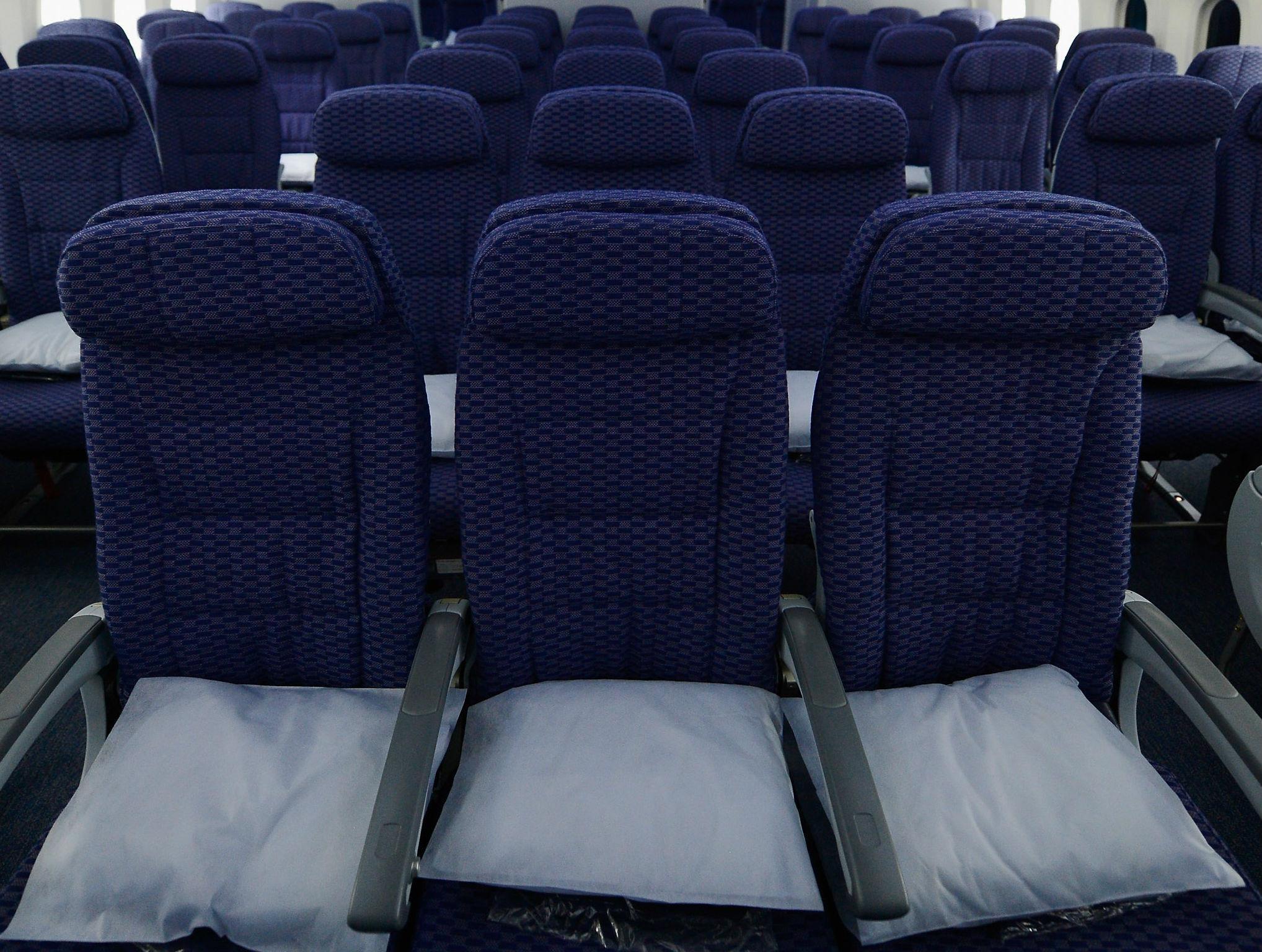US court orders regulators to clamp down on 'the incredible shrinking airline seat' over safety fears
Airline passenger advocates say that lack of seat size regulations means that the airlines don't have to compete to provide quality services

A US court has come to the same conclusion as anyone who’s been crammed into the middle seat of an American flight: airlines are making seats smaller.
A federal appeals court judge in Washington has ordered the Federal Aviation Administration (FAA) to reevaluate what the judge called “the Case of the Incredible Shrinking Airline Seat”. That’s potentially good news for the world’s contorted travellers.
US Circuit Court of Appeals Judge Patricia Millett admonished the FAA in her opinion for “vacuous” and “vaporous” evidence the agency had used to argue that favouring diminished leg room wasn’t much of a problem.
Airlines have been experimenting with reduced seat sizes in their aircraft for quite some time, to the chagrin of passengers who don’t meet the parameters those chairs are designed for. Even though the shrinking seats have resulted in horror stories spreading online, the airline companies have still looked into the measures as a way of packing in more passengers to pad profits.
Douglass Kidd, the executive director of the National Association of Airline Passengers, told The Independent that the lack of seat size regulations for airlines has led airlines to compete to see how many people they can cram into a plane, instead of competition geared toward providing quality services to customers.
At the same time that airlines are trying to fit more people in a plane with smaller seats, Americans are getting larger.
“People are about 20 or 30 pounds heavier than they sued to be,” Mr Kidd said. “The seats need to be big enough to accommodate everybody. We’re not looking for the luxury of first class but we are looking for reasonable accommodation for, basically, a changing world.”
Ms Millett’s ruling wasn’t a complete win for FlyersRights.org, the group that brought the complaint against the FAA. The National Association of Airline Passengers was not a party, but has filed similar complaints in the past.
The judge wrote that the airline agency had “reasonably concluded” that issues related to passenger comfort aren’t the responsibility of the federal agency — so, tough luck if you’re feeling cramped between two adjustable seats. She also wrote that concerns over blood clots weren’t necessarily related to seat spacing or sizes. The ruling also stopped short of ordering the agency to develop set seat space rules.
The judge did express concern for emergency evacuations, and how smaller and more cramped seating might affect the safety of a flight. Although the FAA had cited studies conducted that have analysed the potential risk associated with smaller, more cramped seating, the agency had failed to make those studies public for the court and others to take a look at.
Other studies cited by the agency were “outdated,” Ms Millett wrote. Many came from the days when seats were bigger and airlines were much roomier for a more selective clientele.
“That type of vaporous record will not do,” she wrote. “The Administration’s rational also blinks reality. As a matter of basic physics, at some point seat and passenger dimensions would become so squeezed as to impede the ability of passengers to extricate themselves from their seats and get over to an aisle.”
So, Ms Millett and two other judges have ordered the FAA to go back and take a look at their regulations. They don’t, however, have a deadline on when they must have finished that review.
Mr Kidd said that the ruling is an incremental step in the right direction, but said that the ultimate fix for these types of issues is more likely to come out of laws passed by Congress rather than regulatory agencies. Even so, they face a formidable foe in their paths.
“The airlines have a very effective lobbying effort on Capitol Hill,” he said. “So, even though the people in Congress are aware of the problem, on the one hand they’re being pressured by their constituents to go one way, and on the other hand they’re getting pressured by the airlines.”
The airline industry as a whole spends millions of dollars a year lobbying the federal government on a variety of issues. So far in 2017, the industry has spent $14 million lobbying in Washington, and spent nearly $27.4 million lobbying in 2016, according to data from the Centre for Responsive Politics.
Join our commenting forum
Join thought-provoking conversations, follow other Independent readers and see their replies
Comments